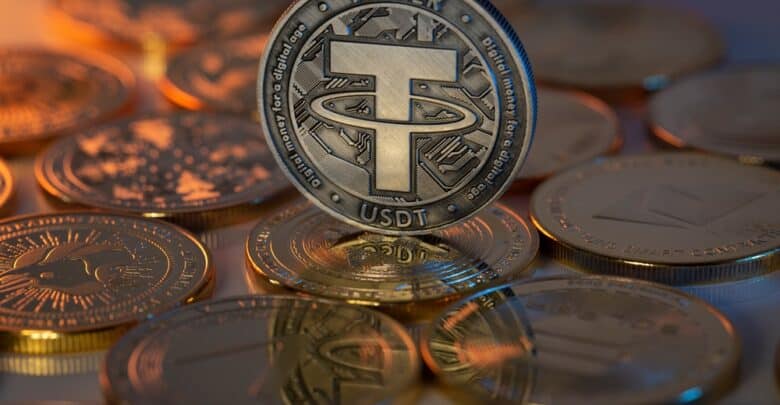USDT vs. USDC: Unveiling the Superior Stablecoin for 2023

Amidst the expanding landscape of cryptocurrencies beyond Bitcoin and Ethereum, fierce competition arises within the realm of stablecoins. Tether (USDT) and USD Coin (USDC) take the spotlight, offering stability amidst volatility. As the crypto industry matures, stablecoins grow increasingly vital for mainstream investors, providing a reliable link to traditional fiat currencies. While numerous stablecoins exist, USDT and USDC emerge as the frontrunners.
However, the choice between these market leaders demands careful consideration. Each possesses unique attributes, advantages, and disadvantages. This comprehensive article explores the intricacies of USDT and USDC, analyzing their internal mechanisms, transparency, liquidity, and trustworthiness. Navigating through the complexities of these prominent stablecoins, we equip you with the knowledge to select the reigning champion of 2023 confidently.
Understanding the Concept of Stablecoins
The competition between USDT and USDC is unique in the stablecoin industry. Stablecoins are a real-world example of how DeFi and blockchain may be put to use. The market is dominated by Tether (USDT) and USD Coin (USDC), which are more widely used than their rivals.
Stablecoins are cryptocurrencies pegged to assets like fiat currency or gold. While most stablecoins are tied to the US dollar, we’re seeing the emergence of alternatives like the Euro and Renminbi. These digital assets are stored on a secure blockchain, protecting against market volatility. Stablecoins aim to provide stability in the cryptocurrency market.
Understanding the Mechanism of Stablecoins
Depending on how they were created and disseminated, stablecoins might have centralized or decentralized features. Stablecoins built on the blockchain may be classified as fiat-backed, collateralized, or algorithmic.
Stablecoins whose value is pegged to a fiat currency are backed by such reserves. These coins are backed one to one by fiat cash held by the issuer at all times. Binance USD (BUSD), Tether (USDT), and the USD Coin (USDC) are all examples of such digital currencies.
In contrast to traditional fiat currencies, gold, and Bitcoin (BTC), collateralized stablecoins lack backing from central banks or other entities. Unlike them, stablecoins maintain a steady value as their issuers hold external assets securely.
Algorithmic stablecoins use embedded smart contracts to uphold their value, autonomously engaging in conversions with reserve currencies via blockchain-based mechanisms.
Understanding Tether (USDT) Stablecoins: A Comprehensive Overview
iFinex, the Hong Kong-based company behind Tether, has created the world’s most valuable stablecoin, worth over $83 billion. In addition to running the BitFinex cryptocurrency exchange, Tether ensures that an equivalent amount of reserve assets in dollars backs each USDT token. This enables USDT to function like traditional fiat currencies, facilitating seamless transactions such as buying, selling, and fund transfers.
Tether has emerged as a groundbreaking cryptocurrency by addressing challenges in blockchain technology. It facilitates cross-border currency exchanges and empowers token holders to verify the value of their tokens independently.
Despite criticism regarding its reserve management and level of decentralization, USDT maintains its dominant position in the stablecoin market. It is widely traded across multiple platforms and securely stored in various wallets.
To address security concerns, the organization responsible for Tether has adopted a more transparent approach. They now provide monthly reports demonstrating their commitment to alleviating customer apprehension and ensuring financial stability.
Issues Surrounding the USDT Token
Tether’s position in the blockchain ecosystem has been dogged by controversy, leading some to question whether or not the company can provide verifiable proof that it has sufficient reserves to back the USDT coins in circulation.
Investigators from regulatory and law enforcement agencies that looked into Tether found that the company had little assets on hand and instead relied heavily on business loans and unsecured debts.
Bitfinex, an affiliated firm of Tether, mismanaged $850 million of client and organization funds and used Tether’s reserves to cover it up, adding to the chaos. This heightened the already intense scrutiny. Tether Limited fraudulently hid this significant loan from investors, and as a consequence, in 2021, they will have to pay a fine of $18 million.
Tether’s recent developments are significant because they mark a new direction for the leading stablecoin supplier. Tether is now more open than ever, with regular changes to its reserve levels.
Understanding USD Coin (USDC): A Comprehensive Overview
USD Coin, like Tether, is a stablecoin pegged to the US dollar at a 1:1 ratio. USD Coin, introduced by the Centre Consortium in 2018 on the Ethereum network, has quickly gained prominence because of the support of major companies like Circle and Coinbase.
Unlike Tether, USD Coin emphasizes transparency and openly reveals its currency reserves. Instead of relying on a single entity, USDC ensures additional trust by collaborating with licensed financial institutions that facilitate the seamless exchange of USDC tokens at a 1:1 ratio.
To bolster its credibility, USD Coin regularly undergoes attestations and audits, providing assurance of its ample cash assets and safeguarding the expanding crypto ecosystem. The growing popularity of the USD Coin is evident as it has become the second-largest stablecoin and ranks among the top 10 cryptocurrencies by market capitalization.
USDC Tokens
While USD Coin has enjoyed a strong reputation, recent events have highlighted certain vulnerabilities. An example is the collapse of Silicon Valley Bank, which held a substantial amount of USDC, causing a detachment from its peg. Consequently, the value of one USDC unit plummeted to as low as $0.86.
The discontinuation of Signature Bank’s significant product, Signet, further compounded the bank’s failures. Signet played a crucial role in facilitating the exchange of USDC for US currency. These incidents have cast a shadow over Circle and USD Coin’s reputation, raising concerns about the stability of this stablecoin.
Nevertheless, USD Coin has demonstrated resilience by swiftly recovering from this setback and successfully reestablishing its peg shortly after the initial disruption.
A Comparative Analysis: USDT versus USDC
Tether (USDT) emerged in October 2014, a significant four years before the introduction of USD Coin (USDC) in September 2018. Nevertheless, Tether’s journey has been marred by controversies surrounding the reliability of its reserve statements and the adequacy of reserves to redeem all circulating USDT tokens fully.
On the contrary, USD Coin has maintained a relatively less controversial image, although it has not been without its challenges. As mentioned in the de-pegging section, a notable incident occurred in March 2023, which severely shook market confidence in USDC, leading to a substantial decline in the company’s market value.
Comparing USDC and USDT: Which Option Reigns Supreme?
Choose the ideal stablecoin, USDT or USDC, based on your specific needs. While temporary storage for trading purposes may not heavily impact your decision, long-term wealth preservation requires careful consideration.
Tether offers the option to exchange USDT tokens for US dollars, but the minimum requirement of 100,000 USDT ($100,000) and a 150 USDT verification cost are reasonable only for larger holders. Most users prefer trading USDT for fiat cash on cryptocurrency exchanges like Kraken, which offers direct trading with EUR and USD. An initial exchange might be necessary if you intend to convert USDT to other cryptocurrencies like Bitcoin for sale on different platforms.
In contrast, Circle’s Circle Account simplifies the redemption of USD coins with a $100 minimum and no withdrawal fees. Alternatively, you can trade USDC for USD on a cryptocurrency exchange.
USDT and USDC have experienced instances where their value dropped below the $1 peg. USDT faced challenges in 2018 with rumors about Bitfinex’s reserves and withdrawal issues, causing its value to decrease temporarily to $0.92 before stabilizing. In March 2023, USDC encountered a de-pegging crisis due to the failure of the Silicon Valley Bank, resulting in its price falling below $1 on various exchanges. However, Circle successfully resolved the situation by transferring reserves to other banking partners, restoring USDC’s value to $1 within days.
USDT holds an advantage over USDC due to its long history, introduced as Realcoin in October 2014, compared to USDC’s release in September 2018.
Furthermore, Tether enjoys higher trading volume and liquidity, with an average daily trading volume of $80 billion reported by CoinMarketCap, surpassing USD Coin’s $11 billion. This makes Tether the preferred stablecoin among market participants due to its significant volume advantage.
Navigating the Hazards of Stablecoins
Due to their stability and predictability, stablecoins have become an indispensable component of the cryptocurrency ecosystem. However, the events of 2022 served as a stark reminder of the risks involved. The failure of the FTX cryptocurrency exchange and the Terra ecosystem, designed to support algorithmic stablecoins like UST, sent shockwaves through the industry.
Moreover, recent bankruptcies in the crypto lending sector have significantly eroded customer confidence, especially in centralized entities responsible for safeguarding their digital assets. Trust-based stablecoins such as USDC and USDT were not immune to these developments. As a result, stablecoin holders must guarantee that issuers possess ample funds to back all tokens in circulation.
Bottomline
Stablecoins, underpinned by fiat currency, play a vital role in the cryptocurrency market. Tether and USD Coin aim for a 1:1 value, yet each possesses distinct qualities and challenges. With a long history and higher trading activity, Tether faces scrutiny over its reserve asset security.
In contrast, USD Coin is more transparent about its reserves despite the lower trading volume. The choice between the two depends on personal preferences. The competition between USDT and USDC will intensify as the crypto industry evolves.
Nonetheless, both stablecoins remain essential in 2023, serving as trusted value stores. Understanding their pros and cons is crucial before committing to any stablecoin.
To make informed financial decisions, stay updated with crypto developments. More unique stablecoins will likely emerge as the industry progresses.
Investors prefer USDT and USDC due to their stability, liquidity, and trustworthiness compared to other stablecoins.
Tokenhell produces content exposure for over 5,000 crypto companies and you can be one of them too! Contact at info@tokenhell.com if you have any questions. Cryptocurrencies are highly volatile, conduct your own research before making any investment decisions. Some of the posts on this website are guest posts or paid posts that are not written by Tokenhell authors (namely Crypto Cable , Sponsored Articles and Press Release content) and the views expressed in these types of posts do not reflect the views of this website. Tokenhell is not responsible for the content, accuracy, quality, advertising, products or any other content or banners (ad space) posted on the site. Read full terms and conditions / disclaimer.







